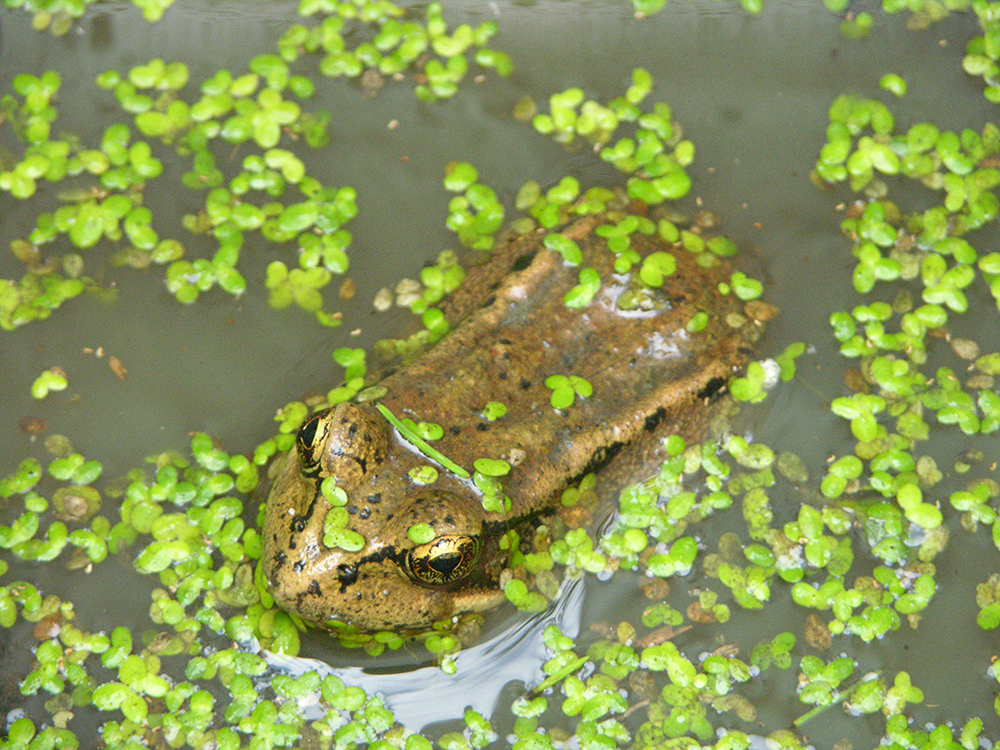Nature Thrives Here!
The Cariboo Heights forest and the Brunette River Conservation Area are home for a remarkable diversity of native plants and shrubs which provide shelter and food for birds, mammals, amphibians and invertebrates, including native pollinators.
Wildlife Corridors
It’s amazing that big animals like black bears, coyotes and bobcats live in the middle of Burnaby. These animals need large territories to find food and shelter. A BC study found that bobcats have an average range of 55 to 140 square km.
Burnaby is an urban hot spot for wildlife because the city has protected several neighbouring forests and natural corridors: Burnaby Mountain Conservation Area, Stoney Creek Ravine Park, Burnaby Lake Park, Robert Burnaby Park, Cariboo Conservation Area and Brunette River Conservation Area. None of these parks are large enough on their own for bears and bobcats to survive but together they are a refuge for wildlife. The Cariboo Heights forest is the only part of the linked central valley forests that is not yet protected!

Threatened Species
Four endangered or vulnerable species live here. All four species once lived in many parts of the Fraser Valley but logging, agriculture and urban development have destroyed much of their former habitat.
Washington Snowshoe Hare
The Washington snowshoe hare is a subspecies of the snowshoe hare. Unlike other snowshoe hares which molt to a white fur coat in the winter, the Washington subspecies stays brown all year. It lives in coniferous or mixed forests with dense bushes that provide food and protection from predators. The best known population in BC lives in Burnaby Lake Regional Park. The greatest threats to their survival are habitat loss, collisions with motor vehicles and attacks by domestic dogs and cats.

Northern Red-legged Frog
Adult red-legged frogs spend most of their life in moist forests near wetlands. In spring, they seek ponds to find mates and lay their eggs. Their survival is threatened by urban development, warming water because of climate change and water pollution. Another big threat is the spread of invasive American Bullfrogs. Bullfrogs are voracious predators that eat both red-legged frog tadpoles and adults.

Nooksack Dace
The Nooksack dace is a small (about 10 cm long) streamlined minnow that is adapted for living in clear, rapidly moving rivers with loose gravel bottoms. In Canada, it is only found in the Brunette River and three other small creeks in the Fraser Valley. The main threats to Nooksack dace are habitat destruction and silty polluted water coming from urban storm drain runoff.

Cutthroat Trout
Cutthroat trout are part of the salmonid family. There are some resident cutthroat living year round in the Brunette River and Stoney Creek. Cutthroat trout need rivers and streams with clean, cool water, and deeper pools protected by overhanging vegetation. They are sensitive to water pollution, changes in water flow and silty water.

Other Wildlife
Black bear, bobcat, coyote, beaver, river otter, raccoon, Pacific jumping mouse, shrew, deer mice, Douglas squirrel, Townsend’s vole, coastal mole, green frog, common garter snake, salamanders, native pollinators, butterflies, moths, snails, banana slug
Birds
More than 55 species of birds live here seasonally or year-round.
Year-round birds:
Mallard, wood duck, glaucous winged gull, great blue heron, Eurasian collared-dove, barred owl, Anna’s hummingbird, belted kingfisher, northern flicker, downy woodpecker, pileated woodpecker, northwestern crow, common raven, Steller’s jay, American robin, hermit thrush, bushtit, black-capped chickadee, chestnut-backed chickadee, red-breasted nuthatch, brown creeper, Pacific wren, Bewick’s wren, golden-crowned kinglet, song sparrow, spotted towhee, dark-eyed junco, white-crowned sparrow, house finch, purple finch, pine siskin, American goldfinch, European starling
Seasonal birds:
Common merganser, hooded merganser, osprey, bald eagle, red-tailed hawk, rufous hummingbird, willow flycatcher, Pacific-slope flycatcher, Western wood-pewee, Swainson’s thrush, varied thrush, cedar waxwing, ruby-crowned kinglet, warbling vireo, Hutton’s vireo, red-eyed vireo, black-throated gray warbler, Wilson’s warbler, orange-crowned warbler, yellow-rumped warbler, yellow warbler, Townsend’s warbler, fox sparrow, golden-crowned sparrow, Western tanager, black-headed grosbeak, brown-headed cowbird
Trees and Shrubs
Western red cedar, western hemlock, Douglas fir, Sitka spruce, bigleaf maple, vine maple, bitter cherry, red alder, black cottonwood, osoberry, salmonberry, thimbleberry, salal, huckleberry, red elderberry, Pacific ninebark, trailing blackberry, Douglas spirea, devil’s club, willows, beaked hazelnut
Wildflowers
Western trillium, false Solomon’s seal, Hooker’s fairybells, false lily-of-the-valley, Siberian miner’s lettuce, fringecup, piggy-back plant, foam flower, baneberry, large-leaved avens, fireweed, mountain sweet-cicely, hemp-nettle, foxglove, nipplewort, wall lettuce, wild ginger, western starflower






